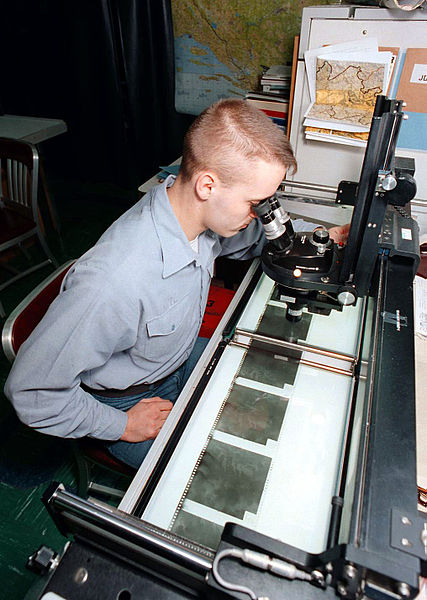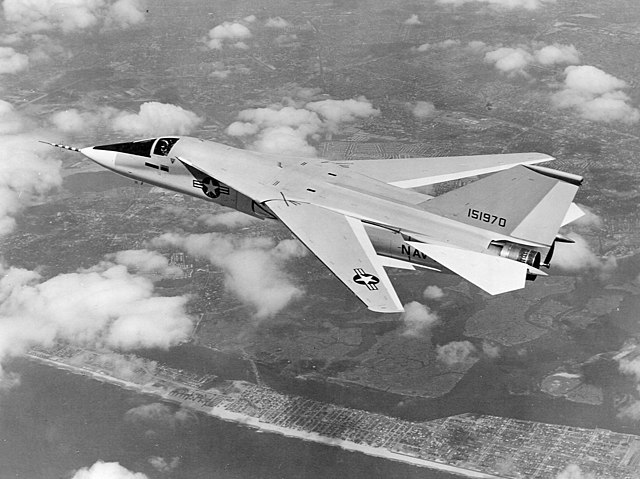Tactical Airborne Reconnaissance Pod System
The Tactical Airborne Reconnaissance Pod System (TARPS) was a large and sophisticated camera pod carried by the Grumman F-14 Tomcat. It contains three camera bays with different type cameras which are pointed down at passing terrain. It was originally designed to provide an interim aerial reconnaissance capability until a dedicated F/A-18 Hornet reconnaissance version could be fielded. TARPS was pressed into service upon arrival in the fleet in 1981, and remained in use up to the end of Tomcat service in 2006.
F-14 with a TARPS pod mounted
TARPS drawing.
At 17 feet (5.2 m) and weighing 1,850 lb (840 kg), the TARPS is the largest device hung on a Tomcat.
TARPS intelligence specialist uses a light table to analyze film from KS-87 camera.
The Grumman F-14 Tomcat is an American carrier-capable supersonic, twin-engine, two-seat, twin-tail, all-weather-capable variable-sweep wing fighter aircraft. The Tomcat was developed for the United States Navy's Naval Fighter Experimental (VFX) program after the collapse of the General Dynamics-Grumman F-111B project. A large and well-equipped fighter, the F-14 was the first of the American Teen Series fighters, which were designed incorporating air combat experience against MiG fighters during the Vietnam War.
Grumman F-14 Tomcat
The F-111B was designed to fulfill the carrier-based interceptor role, but had weight and performance problems, and was not suited to the types of aerial combat that were predominant over Vietnam.
Grumman's VFX entry was designed around the TF30 engine, AWG-9 radar and AIM-54 missile intended for the F-111B; this eventually became the F-14A.
VFA-143 "Pukin Dogs" F-14B (in the foreground) and F/A-18E Super Hornet in 2005








